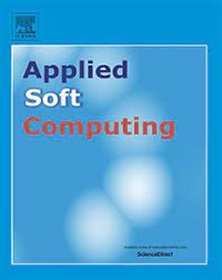Dynamic light optimization in vertical farming using an IoT-driven digital twin framework and artificial intelligence
IF 7.2
1区 计算机科学
Q1 COMPUTER SCIENCE, ARTIFICIAL INTELLIGENCE
引用次数: 0
Abstract
The global agricultural sector faces mounting challenges from climate change, population growth, urbanization, and environmental degradation, necessitating innovative solutions to ensure food security. Urban and peri-urban agriculture, particularly vertical farming, offers a sustainable approach to increase food production while minimizing land use, reducing environmental impact, and enhancing resource efficiency. Unlike conventional vertical farming systems that rely on static spectral recipes with fixed light compositions (e.g., Red-to-Blue ratios derived from historical data), this study introduces an Internet of Things-enabled smart vertical farming system that leverages digital twin technology and a genetic algorithm (GA) to dynamically optimize lettuce growth by adjusting RGB LED spectra throughout the crop cycle. The system monitors and controls key environmental parameters within a growth tower, including temperature, humidity, and lighting. A digital twin facilitates real-time data exchange between physical and virtual components, while the GA iteratively refines the light composition. Over a 34-day cultivation period, the algorithm identified an optimal RGB configuration (R:211, G:169, B:243; maximum intensity: 255) that aligns with spectral values reported in literature for lettuce, despite not directly measuring photobiological metrics such as Photosynthetic Photon Flux Density. To our knowledge, this is the first study to implement a dynamic, GA-driven spectral optimization strategy in vertical farming. While the objective was not to surpass traditional static lighting recipes, the results validate that adaptive methods can reliably converge to established optima. The IoT platform demonstrated robust capabilities in data collection, processing, and actuation, underscoring the promise of adaptive lighting strategies for controlled agriculture. Future research will focus on incorporating additional spectra (e.g., deep red, ultraviolet), automating data collection via image recognition, and analyzing energy efficiency to enhance scalability.
求助全文
约1分钟内获得全文
求助全文
来源期刊

Applied Soft Computing
工程技术-计算机:跨学科应用
CiteScore
15.80
自引率
6.90%
发文量
874
审稿时长
10.9 months
期刊介绍:
Applied Soft Computing is an international journal promoting an integrated view of soft computing to solve real life problems.The focus is to publish the highest quality research in application and convergence of the areas of Fuzzy Logic, Neural Networks, Evolutionary Computing, Rough Sets and other similar techniques to address real world complexities.
Applied Soft Computing is a rolling publication: articles are published as soon as the editor-in-chief has accepted them. Therefore, the web site will continuously be updated with new articles and the publication time will be short.
 求助内容:
求助内容: 应助结果提醒方式:
应助结果提醒方式:


